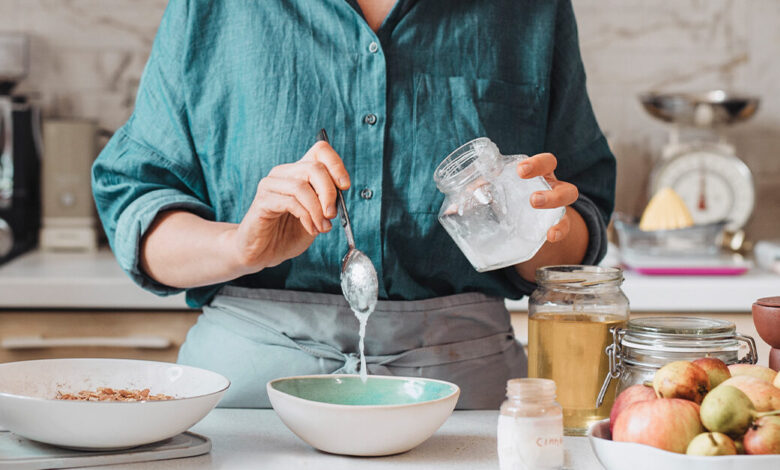Why do we use fats in the kitchen?

What allows us to perceive and enjoy flavors, aromas and textures when we eat? Both lipids and fats carry and retain compounds that give food flavor and aroma.. In addition, they help modulate the texture of the food, which influences the perception of flavors. This is why they are so popular in many kitchens. In any case, it is necessary to take into account the daily intake recommendations of the World Health Organization (WHO) to have a healthy diet. Fats provide 9 kcal per gram, recommending that their intake in adults does not represent more than 30% of the total recommended daily energy, which can vary for each individual.
Fats in the right measure
Lipids are a group of substances formed basically by carbon, oxygen and hydrogen, insoluble in water. In animals and plants they are stored in the form of triglycerides, which are 95% fat. consumption of fats in its proper measure is recommended to follow a healthy diet, since are the macronutrients that give us more energy. The most commonly used fats in cooking are oils, which are fats that are in liquid form at room temperature.
The methods of obtaining and processing vegetable oils differ between organic and conventional production. The organic oils they are obtained by cold pressing of the seeds or fruits, which gives rise to virgin oils ready for consumption. Using this methodology, the oil obtained preserves the flavor of the seed, as well as the original content and properties of the lipids present. Conventional oil extraction is generally carried out using solvents and chemical processes that separate it from the rest of the cellular elements, although it can also be obtained by cold pressure. Subsequently, they usually follow physical or chemical refinement processes, since otherwise they would not be suitable for consumption. During the refinement, rectification processes are carried out to eliminate part of the lipids present, pigments, odors and other impurities present. Consequently, the non-organic oil obtained has a longer shelf life, but it leads to a worsening of the nutritional profile of the oil.
The most used fats in the kitchen are oils, which are fats that are in liquid form at room temperature
Technological features
Both lipids and fats are of great importance for the food industry, since they are responsible for various vital technological functions to obtain the desired quality of the final product.. In food we also find a set of aromatic compounds that provide flavor and aroma. Most of these compounds are transferred and retained in the fatty phase of foods, since they are soluble in oil, but not in aqueous media.. Not only in industry, but also in common products such as stir-fry, chocolate bars or homemade muffins, we can appreciate the usefulness of lipids and fats.
When we prepare a sofrito at home, we first heat the oil and add the most aromatic ingredients such as garlic and onion, which contain more powerful aromatic compounds than, for example, tomato. Low-temperature cooking allows the transfer of these compounds to the oil and its subsequent release and perception of aroma and flavors during consumption.. Also, the amount of fat used influences the release profile of these compounds when we eat. If the amount is not sufficient, the release occurs more intensely at first, but is short-lived. On the contrary, when the amount of fat is higher, the intensity of released compounds is lower, but lasts longer over time. In this way, fatty foods give a longer flavor perception compared to those containing lower amounts of fat.
textures and sensations
In products such as chocolate bars, fats are determinants of the sensations that the food produces in the mouth (palatability). The fat from the cocoa bean is cocoa butter, but to reduce costs we can find it replaced, for example, by palm oil.
When chocolate has been produced and preserved in the right conditions, we can perceive a pleasant creaminess and texture when consumed due to the correct crystallization of the lipids present. In this case, the crystals are distributed throughout the food and melt in the mouth during consumption, giving it its characteristic texture and shiny, smooth appearance. On the contrary, when temperatures increase, these crystals melt prior to consumption and the lipids migrate to the surface. When temperatures decrease, the lipids crystallize again, but this time they do so on the surface. This results in a less pleasant, soft and gritty texture, as well as the whitish layer that we can see many times during the summer on the surface of the chocolate bar.
The amount of fat used influences the release profile of these compounds when we eat
On the other hand, among the ingredients used to prepare some muffins, there is always a source of fat. In Spain it is usually extra virgin olive oil, but this can be replaced by other oils, as well as by butter or margarine. The fats provide the soft texture of the cupcake, avoiding the dry sensation in the mouth that would occur with its absence. In addition, they help to distribute the gas during the dough mixing process to achieve a pleasant porosity in the final product. Different fats provide different qualities to the final product. When they are prepared with oil, muffins of greater volume are obtained than when butter is used, since in this case the proteins of the flour are more involved in the fats and it is more difficult to form the gluten network.



